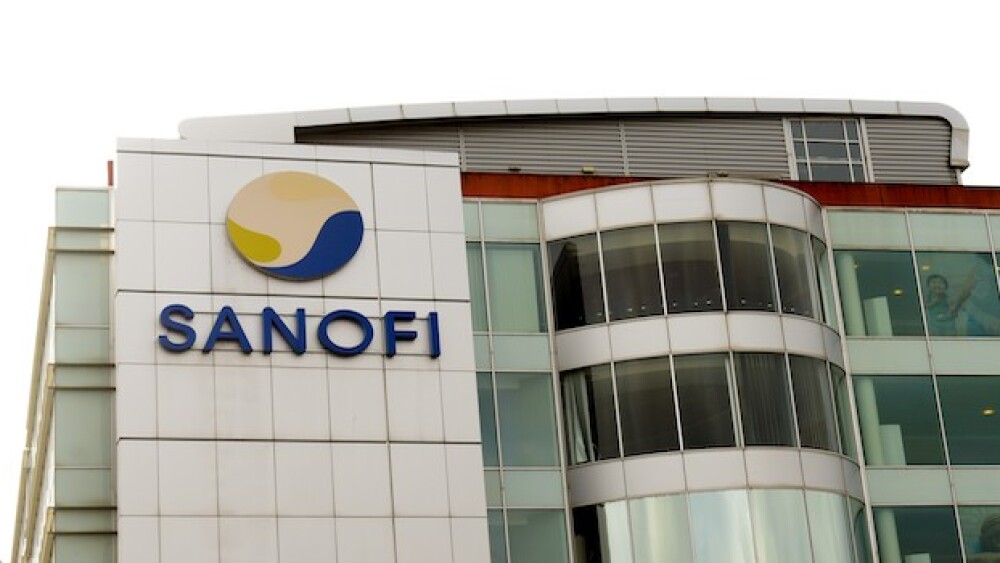For $150 million upfront, Sanofi will gain access to Maze’s lead asset MZE001, which inhibits the GYS1 protein in the rare genetic disorder.
Pictured: Sanofi sign/courtesy of AUFORTJérome_Adobe Stock
Monday, Sanofi and Maze Therapeutics entered into an exclusive worldwide license agreement to advance the California biotech’s glycogen synthase 1 (GYS1) program and lead candidate MZE001, both for Pompe disease.
Under the terms of the deal, Sanofi made an upfront $150 million payment in cash and future equity investments. Maze will also be entitled to receive up to $600 million in potential development, regulatory and sales milestones, as well as royalties on all sales if MZE001 makes it to the market.
Pompe disease is a rare genetic disorder caused by mutations in the gene encoding for the acid alpha-glucosidase (GAA) enzyme, which under healthy circumstances degrades glycogen polymers into its constituent glucose building blocks.
GAA dysfunction leads to the toxic build-up of glycogen in the muscles, which gives rise to the severe and progressive muscle weakness, as well as heart defects, typical of Pompe disease. The current treatment regimen for Pompe disease commonly involves enzyme replacement therapy, which can help deplete glycogen stores and improve muscle tone in patients.
Sanofi is already an established player in this space. The company’s Lumizyme (alglucosidase alfa), first developed by Genzyme, was approved by the FDA in 2010. Sanofi acquired Genzyme in 2011. In August 2021, Sanofi won another FDA approval for its Pompe enzyme replacement therapy Nexviazyme (avalglucosidase alfa-ngpt).
However, many patients still need new treatment options, Maze CEO Jason Coloma said in a statement. To this end, the company is focusing on a novel Pompe target, GYS1, a protein that plays a crucial role in the production of glycogen.
Maze’s lead asset, MZE001, is an investigational and orally available molecule that inhibits GYS1, in turn limiting the pathologic build-up of glycogen.
In February, Maze released positive Phase I data showing that in 112 healthy volunteers, MZE001 was well-tolerated even at 720-mg doses twice daily. Moreover, MZE001 induced a dose-dependent drop in glycogen levels in peripheral blood mononuclear cells, indicating that the candidate effectively engaged GYS1.
In March, Maze announced results from biopsy studies, which revealed that at a 480-mg dose, its GYS1 inhibitor induced a nearly 60% drop in muscle glycogen synthesis after 10 days of treatment. MZE001 also cut total muscle glycogen concentrations by approximately half.
Twice-daily administration of the candidate also did not affect blood glucose or insulin levels, further supporting its favorable tolerability profile.
Tristan Manalac is an independent science writer based in metro Manila, Philippines. He can be reached at tristan@tristanmanalac.com or tristan.manalac@biospace.com.






